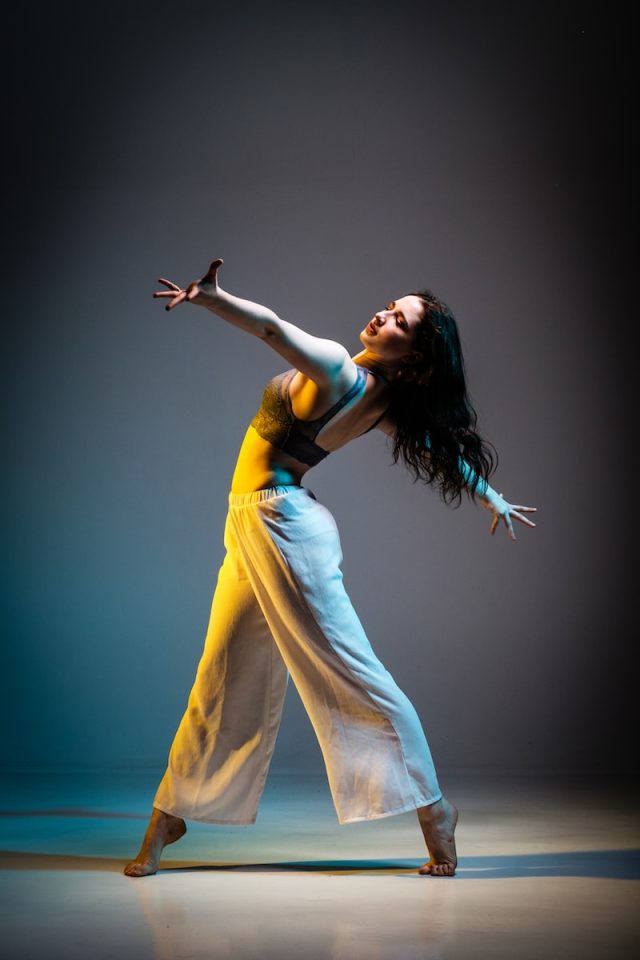Dancing is an excellent way to have fun while getting in a great workout. Whether you want to improve your fitness, build endurance, or just have a good time, dancing can be an excellent choice. The best part? Anyone can dance, regardless of their age or fitness level. With so many different dance styles to choose from, there is sure to be a type of dance that appeals to you. In this beginner’s guide, we will explore some of the benefits of dancing and provide tips and suggestions for starting your dancing journey. So put on your dancing shoes, and let’s get started!
Health Benefits of Dancing
Dancing is not only a fun activity but also has a wide range of health benefits. From improved cardiovascular health to increased strength and flexibility, dancing can be an excellent way to enhance your physical and mental well-being. In this article, we will explore some of the health benefits of dancing.
- Improved Cardiovascular Health: Dancing is a great way to increase your heart rate and cardiovascular health. Regular dancing can help reduce your risk of heart disease, stroke, and high blood pressure.
- Increased Strength and Flexibility: Dancing involves a lot of movement, which can help improve your overall strength and flexibility. Dancing can also help improve your balance and coordination.
- Weight Loss: Dancing can be a great way to burn calories and lose weight. Depending on the type of dance, you can burn anywhere from 200 to 400 calories in just 30 minutes.
- Reduced Stress and Anxiety: Dancing can be a great stress reliever. It can help reduce anxiety and depression and improve your overall mood.
- Improved Cognitive Function: Dancing requires a lot of mental focus and coordination, which can help improve your cognitive function. Studies have shown that regular dancing can help improve memory, attention, and reaction time.
- Social Connection: Dancing is a great way to meet new people and make friends. It can also help improve your social skills and boost your confidence.
In conclusion, dancing is a fun activity and has numerous health benefits. So, whether you’re looking to improve your physical health and mental well-being or just have some fun, dancing is an excellent choice.
Finding a Dance Style
Dancing is a fun and rewarding way to exercise and express yourself. With so many different dance styles to choose from, it can be overwhelming to decide which one is right for you. This article will provide tips for finding a dance style that suits your interests and abilities.
- Consider Your Interests: Think about the types of music and dance styles that interest you. Do you enjoy upbeat, fast-paced music, or are you more drawn to slower, romantic tunes? Are you interested in learning traditional ballroom dances, or do you prefer modern hip-hop styles? Knowing what music and dance styles you enjoy can help narrow your options.
- Assess Your Abilities: Consider your physical abilities when choosing a dance style. Some styles, such as ballet or tap, require a lot of strength, flexibility, and coordination. If you’re a beginner or have physical limitations, you may want to start with a less demanding style, such as ballroom or line dancing.
- Try Different Styles: Don’t be afraid to try different dance styles to see what you enjoy the most. Many dance studios offer introductory classes or trial memberships that allow you to sample different styles before committing to a full course.
- Consider the Environment: Consider the environment in which you want to dance. Some people prefer the structure of a traditional dance class, while others enjoy the freedom of dance fitness classes or social dancing events.
- Seek Professional Advice: If you’re unsure which dance style is right for you, consider seeking advice from a dance instructor or personal trainer. They can assess your abilities and interests and recommend a style that is best suited to your needs.
In conclusion, finding the right dance style requires some exploration and experimentation. By considering your interests, abilities, and environment and seeking professional advice, you can find a dance style that is both enjoyable and beneficial for your physical and mental health.
Learning the Basics
Learning the basics is an essential part of starting any dance style. It is the foundation on which you will build your skills and technique.
- Attend a Beginner Class: Attending a beginner dance class is an excellent way to learn the basics of a dance style. These classes are designed for people new to the dance style and will cover the fundamental movements and techniques.
- Practice Regularly: Practice makes perfect, and dancing is no exception. Regular practice is essential to mastering the basics of dance. Even just a few minutes of practice daily can help you improve your technique and muscle memory.
- Pay Attention to Detail: Paying attention to the small details of each movement is crucial to mastering the basics. Focus on your posture, footwork, and arm movements, and try to replicate the movements as accurately as possible.
- Break it Down: Breaking down each movement into smaller parts can help you understand the mechanics of the movement and make it easier to master. Take your time and practice each part before putting it all together.
- Don’t be Afraid to Ask for Help: If you’re struggling with a particular movement or technique, don’t be afraid to ask for help. Dance instructors are there to help you learn and improve, and asking for clarification or extra guidance can be extremely helpful.
- Take Your Time: Learning the basics of dance takes time and practice. Don’t rush the process, and don’t get discouraged if you don’t master a movement right away. Remember that everyone starts as a beginner, and with patience and perseverance, you can master the basics and progress to more advanced techniques.
In conclusion, learning dance basics is crucial to mastering any dance style. By attending beginner classes, practicing regularly, paying attention to detail, breaking down movements, asking for help, and taking your time, you can master the basics and progress to more advanced techniques.
Developing Technique
Developing technique is an essential part of advancing in any dance style. It allows you to execute movements with precision and control and adds an extra layer of beauty and expression to your dance.
- Focus on Posture: Good posture is crucial to developing technique in dance. Stand up straight, engage your core muscles, and relax your shoulders. You can execute movements with more precision and control by maintaining good posture.
- Work on Flexibility: Flexibility is an essential component of dance technique. Regular stretching and mobility exercises can help improve your range of motion, making it easier to execute complex movements with ease.
- Train Your Muscles: Dancing requires a lot of muscular strength and endurance. Strength training and conditioning exercises can help build muscle strength and stamina to execute dance movements with control and precision.
- Practice Drills and Exercises: Drills and exercises are a great way to focus on specific aspects of dance technique, such as footwork, arm movements, or turns. Practice these drills regularly to improve your technique and muscle memory.
- Watch Yourself in the Mirror: Watching yourself in the mirror can be a great way to identify areas that need improvement. Pay attention to your posture, footwork, and arm movements, and adjust as needed.
In conclusion, developing techniques is an ongoing process in dance. By focusing on posture, flexibility, muscular strength, drills, and exercises, breaking down movements, watching yourself in the mirror, and taking classes from different instructors, you can continually improve your technique and progress in your dance style.
Staying Motivated
Staying motivated is essential to achieving success in any dance style. Motivation can be challenging to maintain, especially when progress seems slow or you encounter setbacks or challenges.
- Set Realistic Goals: Setting achievable and realistic goals can provide motivation and direction in your dance practice. Break down your long-term goals into smaller, short-term ones, and celebrate each achievement.
- Find Inspiration: Inspiration can come from many sources, including music, other dancers, performances, or even your own progress. Seek out sources of inspiration and use them to fuel your motivation.
- Practice Mindfulness: Mindfulness can help you stay present and focused in your dance practice. Focus on your breath, body, and movements, and let go of distractions or negative thoughts.
- Join a Community: Joining a dance community, such as a dance class, club, or team, can provide support and motivation. Interacting with other dancers can be inspiring and provide opportunities to learn from others.
- Mix it Up: Trying different dance styles or mixing up your practice routine can help prevent boredom and keep you motivated. Challenge yourself to learn new movements or techniques and explore different styles.
- Embrace Failure: Failure is a natural part of the learning process. Embrace failure as an opportunity to learn and grow rather than a setback. Use failure as motivation to keep practicing and improving.
- Take Breaks: Taking breaks from dance practice can help prevent burnout and maintain motivation. Allow yourself time to rest, recharge, and return to dance practice with renewed energy and enthusiasm.
In conclusion, staying motivated in dance requires effort and dedication. By setting realistic goals, finding inspiration, practicing mindfulness, joining a community, mixing up your routine, embracing failure, and taking breaks, you can maintain motivation and achieve success in your dance practice.
Conclusion: Enjoy the Benefits
In conclusion, dancing is an excellent way to stay active, healthy, and happy. It offers numerous health benefits, including cardiovascular fitness, muscular strength, flexibility, and balance. It can also provide emotional benefits, such as stress relief, improved mood, and increased self-confidence. Whether you are a beginner or an experienced dancer, there are many styles to choose from, each with its unique techniques and movements. By learning the basics, developing techniques, and staying motivated, you can achieve success and enjoy the benefits of dancing. So, put on your dancing shoes, turn up the music, and let the rhythm guide you to a healthier and happier you!






























